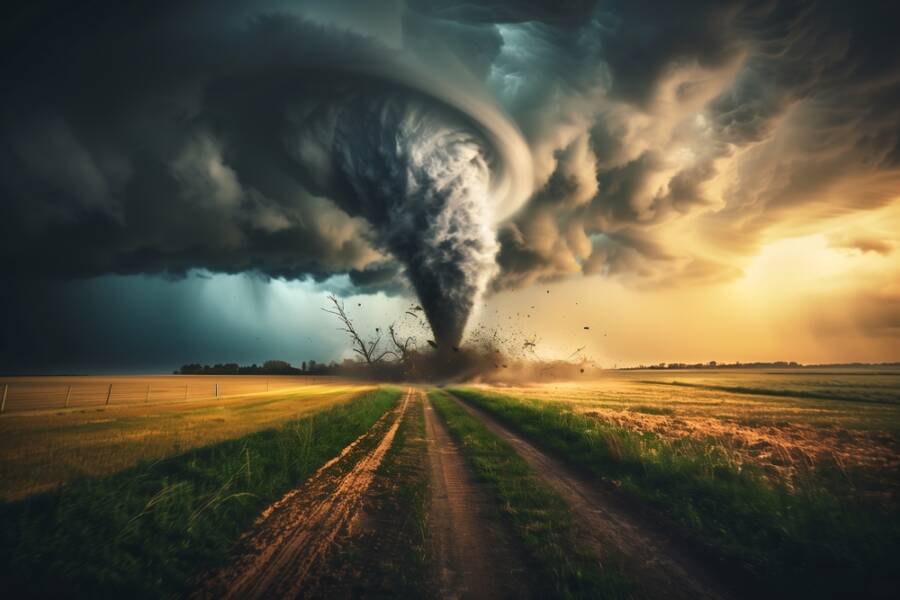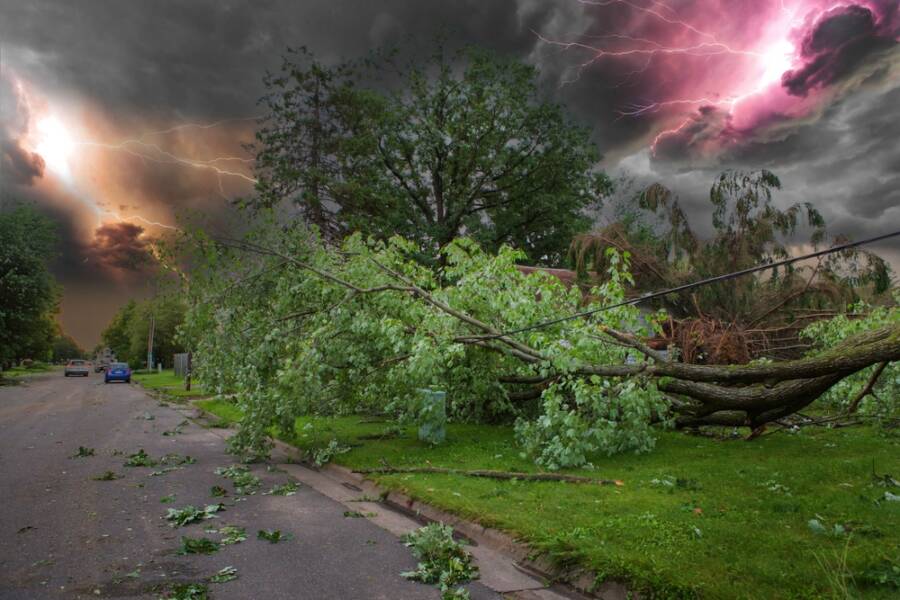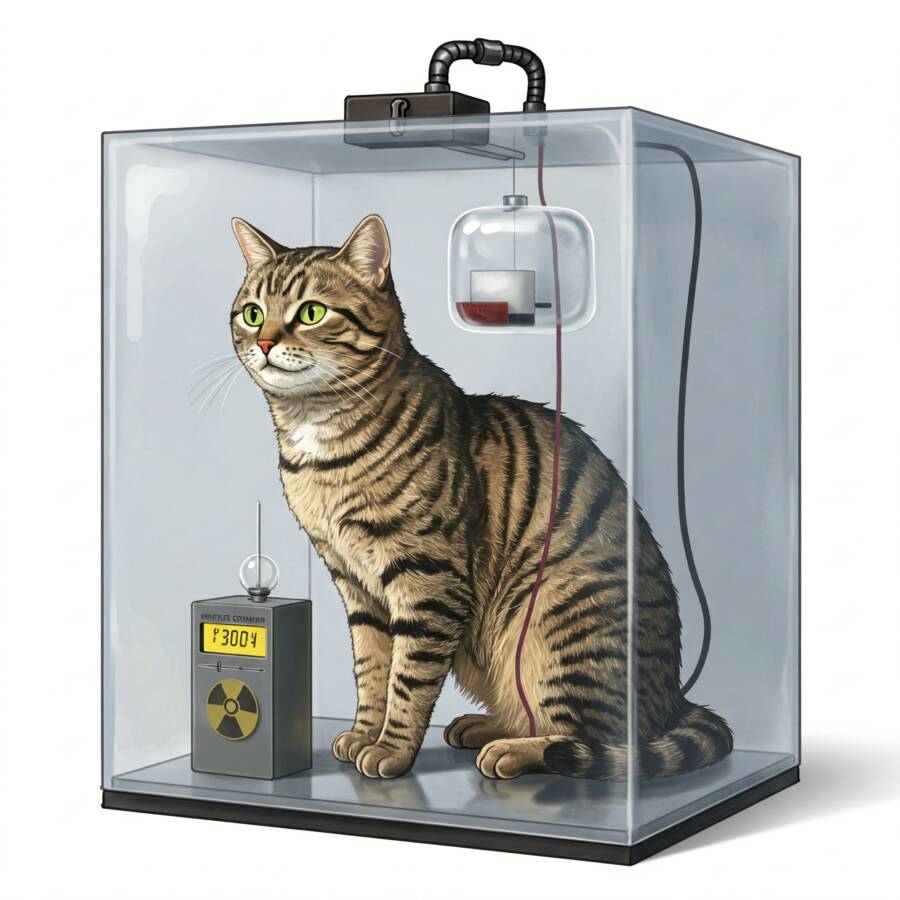Check out these facts about tornadoes and protect yourself from these natural disasters!
Among the most destructive forces of Mother Nature are tornadoes. These enormous, swirling columns of air-packed winds, which can reach speeds of up to 300 mph, have the power to destroy neighborhoods completely and unfortunately take many lives as well.
For those who know what a tornado is but don’t know exactly the scientific explanation behind it, tornadoes arrive as a narrow vortex of air streaks toward the ground, accompanied by baseball-sized hail and pouring rain from looming thunderstorm clouds.
To write this article, we spoke with three scientists to help us figure out some of the mysteries surrounding these devastating cyclones. These are some of the most amazing facts about tornadoes we discovered.

Tornadoes can form at times during the year
In the Midwest, the season for tornadoes typically lasts from April 1 to June 30. During this time, about 80% of all tornadoes occur. However, this depends on where you reside.
The perfect environment for a tornado to develop is flat terrain mixed with unstable conditions like warm, humid air from the Gulf of Mexico colliding with dry winds drifting in from the Rocky Mountains. Tornadoes, however, can occur in practically any place and any season.
For instance, one of the deadliest winter tornadoes ever recorded occurred in December 1953 when a tornado in Mississippi took the lives of 38 people.
Except for Antarctica, all 50 states and every continent have reported reports of them, and they have affected significant cities like Dallas, Miami, and Minneapolis.
There are around 1,000 tornadoes each year
This is probably one of the most shocking facts about tornadoes that gave us quite a few goosebumps. According to the American Weather Institute, there are 1,000 tornadoes on average every year.
Although this may seem like a lot, many of the tornadoes are harmless to moderate in nature and only cause little to no damage. Still, it’s better to prepare yourself and your family accordingly and, of course, have home insurance.
Tornadoes move only upward
In the case of almost any of these natural disasters, the most aggressive winds blow horizontally, directing themselves to the north, south, east, and west compared to tornadoes that move upward. Due to the tornado’s immense strength, anything that is lying in its path—such as vehicles, homes, or animals—can be abruptly taken over into the whirlwind.
The more fascinating thing is that a tornado’s upward motion strength is equal to how quickly it travels over land, with winds reaching speeds of up to 200 miles per hour. That’s crazy!
The tornado’s strongest winds are located closest to the ground
Did you know that the strongest point of this natural disaster is at its lowest point? This process happens very quickly, and in less than a minute, you can go from a small wind to a full tornado.
According to scientists, this intense rotation begins at the earth and ascends to converge into the visible funnel cloud. This is bad news for all of us who live here on Earth because it means that, in contrast to other weather systems, tornadoes cause the worst winds to strike trees, buildings, and people that are close to the ground.
In case of a tornado outbreak, it is better to be safe rather than sorry, so why not be ready with a tornado emergency kit for two people that will supply you with everything you need, from food, water, a first aid kit, a survival blanket, to safety goggles to last you 3 days? It’s available on Amazon for $59.99.
Anticyclonic tornadoes are created by tornadoes
What are these and what damage can do, you may be tempted to ask. Well, the majority of tornadoes rotate counterclockwise in the northern hemisphere and clockwise in the southern hemisphere.
Just 2% of the tornadoes in the area are anticyclonic, meaning they travel in the opposite direction. Generally speaking, these are weaker and smaller than the usual tornadoes.

Climate change is affecting tornadoes more than ever!
Among all these important facts about tornadoes due to climate change, would be good to remember that regions of the country that were previously too cold during the winter are now experiencing days that are warm enough to cause tornadoes to occur at times of the year when they previously wouldn’t.
According to scientists, climate change is causing the atmosphere to become warmer and more humid close to the ground, which raises the instability level and intensifies severe weather that can produce tornadoes. More optimistically, though, there may be a concentration of tornadoes on fewer days.
Nobody can predict whether or not tornadoes will get stronger or fewer in number in the following years. However, we do know that due to the way the climate is changing, we will begin to find them in unusual places and at odd times of the year where it used to always be too cold to have a tornado.
Environment factors may change a tornado’s course
Although there are a bunch of scientists whose only preoccupation is to find more facts about tornadoes, be ready when they occur; at times they may also be surprised by them.
For example, it can be difficult to forecast when and where a tornado will form due to shifting winds and varied terrain, which can make it difficult to determine a twister’s precise direction.
Tornadoes, for instance, can be influenced by thunderstorms, which can be influenced by expansive urban areas. In the big cities, there are more chances of rain and hail, and they can also be warmer due to the interaction of water systems with urban structures, which increases precipitation on their southwest side and of course likelihood of forming a tornado.
A tornado can’t be forecast
Now that’s probably one of the most bizarre facts about tornadoes because it may seem hard to believe. Yet scientists have a good explanation for it.
Tornado warnings are given out when a twister has begun to form, has been observed, or has been detected by weather radar, and the alerts refer to a potentially affected area. That being said, scientists can forecast the atmospheric conditions that would favor tornado-producing, spinning thunderstorms.
Local radio and television news stations will broadcast a tornado watch up to two hours in advance of when elevated weather severity is expected.
…but tornadoes can be measured!
Scientists use the enhanced Fujita scale to assess the degree of destruction caused by a tornado. Tornadoes are rated with an EF rating (Enhanced Fujita Scale) according to wind speed. The scale calculates the wind speed during a three-second wind gust. Anything over 200 mph receives an EF 5 rating, the highest, while EF 0 ratings are for speeds between 65 and 85 mph.
Afterward, scientists estimate its likely wind speed using that information. The system of ratings goes from F0, the weakest cyclone, to F5, the strongest tornado that may harm people.
Scary but storms can produce more than one tornado at a time
A single storm system can produce several tornadoes at once. The storm itself can split into two tornadoes when the winds shift, with the new tornado’s rotating updraft intensifying as the parent tornado gradually weakens.
Only by thinking of these things did we get goosebumps, and for a reason! Tornadoes are scary, and unfortunately, it’s among the natural disasters that cannot be stopped even if our technology evolved so much, which concludes the fact that we are still vulnerable in front of Mother Nature.
Stay safe!
Related article: Science Debunked: The ONLY Safe Places During Tornadoes.














